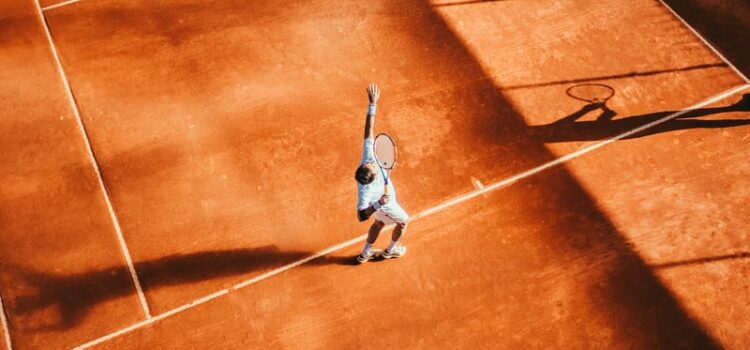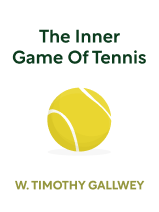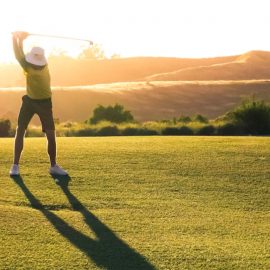

This article is an excerpt from the Shortform book guide to "The Inner Game of Tennis" by W. Timothy Gallwey. Shortform has the world's best summaries and analyses of books you should be reading.
Like this article? Sign up for a free trial here .
What are the tennis skills you need to know? How can you practice and perfect these skills?
Below is a list of the most important technical tennis skills, along with tips from coaches. While it’s important to work on your game, keep in mind that you also have to develop your mental game.
Keep reading for a comprehensive list of tennis skills.
Tennis Skills: Finding Proper Technique and Making It Permanent
Physical technique is also, of course, an important part of a successful player’s game. Trusting Self 2 can improve your physical as well as your mental game.
At times, you’ll have to and want to give your body instruction. This should be based on the natural learning your body does already. You already know how to learn, so don’t try to interfere with that process as you work on your tennis skills.
- Think about animals: Young animals are taught how to walk or swim or run by their parents, who give them only the slightest amount of instruction and some encouragement, and then allow their young to repeat and learn the activity themselves.
Technical instructions are a modern innovation. Experience had to proceed instruction or technical knowledge, because how would that knowledge have been acquired in the first place? Verbal instruction comes from people with experience, but when it’s passed on to people with no experience, it’s harder to understand. There’s a huge split between mind and body when it comes to tennis skills.
Words can give an approximation or a description of actions or ideas or experiences, but they are not the actions or ideas themselves. This is why we learn so much better when our mind allows our bodies to lead.
Verbal instruction can sometimes lead to tennis players hitting good shots but thinking that they are doing something wrong because their form is different from what they’ve been told it should look like. This overcorrection can set people back very far in their games. Thus, we have to trust feeling more than verbal communication.
Nevertheless, some instructions are useful, so long as they guide one’s own discovery process. Think about the suggestion: “Keep the wrist tight while hitting the backhand.”
- The wrist can be not tight enough but it can also be too tight. So allow this instruction to guide your own discovery and experiment with wrist tightness rather than being sure it needs to be tighter. Hit shots with a tighter grip and then a less tight grip. What feels good and what doesn’t? What’s the level of tightness, based on observation, that is comfortable and works best?
- This can also be applied to watching pro tennis: What are they doing that you’d like to do? What specific moves work with your own body or Self 2?
Gallwey includes some technical instruction here that he pairs with some awareness teaching. Consider here some common instructions for ground strokes, serves, and volleys, and how you should use observation to your advantage. Remember to use the instruction as a starting point, but to rely primarily on your own observations to figure out what works for you.
(Shortform note: Since the book was published in 1974, some of these techniques and tennis skills are outdated.)
| Instruction | Observation | |
| Ground Strokes | Follow through at the level of your shoulder. | Notice where you’re following through and how close it is to your shoulder. |
| Bring back the racket early. | Notice where your racket is usually when the ball bounces. | |
| Bend your knees and get down on the ball. | Observe how much your knees are bending when you hit. | |
| Swing up on the ball to produce more topspin. | Watch where your racket is connecting with the ball and how much topspin you’re creating. | |
| Serve | Extend your arm. | Feel how much your elbow is bending. |
| Toss the ball so that you connect with full extension. | Watch how high you’re tossing the ball, practice tosses without hitting the serve. | |
| Volley | Connect in the center of the racket. | Sense without looking where you’re connecting. |
| Plant the back foot. | Feel your weight and how much of it is on the back foot. | |
| Connect with the ball in front of you. | Observe where you’re connecting. | |
| Volley deep in the court. | Observe where the ball is landing. | |
| Don’t bring your racket back too far; punch at the ball. | Discern the minimum amount you can bring your racket back. | |
| Hit the ball before it drops to net level. | Think about how much space there is between the net and the ball when you connect. |
These are the basics of your tennis skills, and as a player, you should always be working on perfecting your technique.

———End of Preview———
Like what you just read? Read the rest of the world's best book summary and analysis of W. Timothy Gallwey's "The Inner Game of Tennis" at Shortform .
Here's what you'll find in our full The Inner Game of Tennis summary :
- Why tennis is actually a mind game
- How to quiet the mind and concentrate intently
- Why your self-worth shouldn't be dependent on how you do in competition






